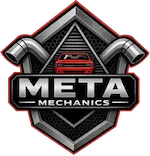About 1 year ago, I chose to do my own oil changes. Eventually, I had to upgrade to replace the brake pads due to a lack of funds. Every year, a new issue surfaced, making me wonder whether I would be better off taking it to an automotive repair or, in certain circumstances, shopping for a secondhand vehicle.
In every case, if I successfully did the automotive repair myself, I could save hundreds of dollars. If I were unsuccessful, I would have to pay the mechanic and lose whatever other money I had put into the endeavor.
Every time, it was a more significant challenge than the last. We started with the spark plugs, moved on to the serpentine belt, wheel bearing, steering knuckle, and starter, and even had to pry out the dashboard to get to the mix door actuator and blower motor. The potential for failure added an exciting element. I’d pull the ratchet handle like a slot machine and see what came out.
Even if I failed to fix anything, the vehicle would still be drivable and could be towed to a professional technician who could get it back on the road.
I finally said “enough” here. I could fix components that were close to or attached to the engine and gearbox, but I would never attempt to tackle the precise engineering that went into those parts. Sorry, but I have to decline.
Then, a year ago, my wife alerted me that the loud and unhealthy noise in her BMW engine had recently worsened after I had ignored it for the more significant part of a year.
I suspected worn timing chains to be the source of the issue, but I was reluctant to investigate more for fear of damaging the engine. So I made calls to a dealership, an independent automotive repair company, and a third option. And I had AED 4000 ready to hand over. Surprisingly, the dealership provided the lowest quotation at AED 5000; the other bidders declined the task, and the remaining bidder demanded more than AED 4500.
Click Here: BMW Car Repair Dubai
I returned to the vehicle since I didn’t think the rattling was that severe. When I turned it on, it sounded like an aluminium can be ground up in a trash disposal. In my head, I could picture the chains flailing, with the potential to leap and grenade the engine at any time, while they chewed the interior of the timing cover. I figured, “They’re just chains;” I’ve attached them to bicycles before, so what could go wrong?
Between when I first had that thought and when I finally finished the task, I learnt a lot. If you’re thinking, as I am, of undertaking a major automotive repair on your own, keep reading. In this article, I will share 10 insights that I hope will be useful to you:
1. To Begin, We Must:
The driveway is different from the place to do serious car maintenance. You don’t want squirrels using your intake manifold as a food storage facility while you’re waiting for this to finish since it will take a long. A basement, workshop, or garage is ideal for this kind of project. Luckily, I have a basement with a garage door. If you don’t have anything like that, a neighbour or friend may let you stay at their place for a few days, weeks, or even months.
Whether or whether you have the time and resources to complete an extensive repair is another factor to think about beforehand. If you’ve ever done automotive repair work on your own, you already have the bare minimum of equipment you’ll need: wrenches and sockets. Although the instructions mentioned several SSTs (Specialty Service Tools) available from BMW for a small amount and my firstborn kid, I managed just fine without them. There were a few situations when having air tools accessible would have made my repairs much more straightforward.
Before beginning work, ensure you have all the necessary supplies. In passing, many car parts businesses would gladly lend out specialized equipment at no cost. Any unused portion of the tool’s rental fee will be refunded to you upon its return.

2. Accumulate Means
You may find videos of others who had the same issue as you and found a solution on YouTube. Pictures are worth a thousand words, but videos on YouTube are worth a billion. Unfortunately, there were few videos to help me fix our repair. The only available videos were for earlier models of rear-wheel drive Sorentos equipped with timing belts, which are incompatible with my vehicle’s front-wheel drive and timing chain.
The following line of defence is a service handbook for the do-it-yourself mechanic. The best resource is a manufacturer’s service manual. However, third-party vendors often provide car repair guides. Chilton and Haynes are the two most well-known. I began the automotive repair using a Haynes handbook, but I soon realized it needed more crucial information.
Seeing instructions that said things like “remove the engine wiring harness, plenum, and valve covers” made me feel hopeless since I had no idea what any of those items were. Step-by-step instructions would be ideal for me.
I again looked online to understand where local garages acquire their automotive repair data. This can be done with the help of dedicated business platforms and retail apps. As a result of their high price, they are beyond reach for the average do-it-yourself mechanic.
However, numerous companies now provide DIY versions of their service, allowing customers to pay a lower fee for restricted access to a single car. Mitchell 1 and AllDataDIY were the two most common ones I ran against. To get a feel for the interface and see what you’re getting for your buck, you may try out either service for free for a limited time before committing to spending AED100 for a whole year.
While most reviews I read online gave Mitchell 1 the nod, I found AllDataDIY more user-friendly. Following that advice, I found myself confronted with 40 pages of detailed instructions and pictures for tasks that were just mentioned in passing in the Haynes handbook.
People, social media, and model-specific online communities are three more essential sources. Ask around until you find a mechanic willing to help you or at least answer your several queries. You may find a community of people who share your interests on any significant social media platform; for example, if you own a specific make and model of the automobile, there is likely a Facebook group for its owners that you can join.
If you enter such a club, you may tap into the expertise of many individuals who know your car and its frequent problems inside and out. If that is different, you may often find a forum of owners online. If you can wait a day or two after posting a question and sort through the excellent advice from the bad, you should be alright.
3. Look Around
While it’s certainly more convenient to stop by your neighbourhood auto parts shop and pick up what you need, it’s important to remember that, in most situations, doing such a project is motivated by a desire to save money. While the Melling timing kit I needed was over AED 700 at the local shop, I got it online from RockAuto for about AED 750. You could only get the variable valve timing assemblies from the dealership at a price of AED480 apiece.
They were the same OEM-branded component, and I got them on Amazon for AED480 apiece. The idea is that comparison shopping may help you save money without sacrificing quality.

4. Finally, write down every single item
So, you know what to do, have the resources to do it, and have a safe work environment. Grab your phone or camera and snap some pics before you go in. This is for reassembling, not posting on social media as “before” and “after” photos. I guarantee that, although you may recall the first setup relatively quickly, you will have forgotten the specifics by the end of the first month.
I documented the disassembly process with hundreds of images, often shooting from several perspectives at each stage, and then organized them into a document with brief notes for later reference. Much effort could be spent on this, but it has often paid for itself. When I saw still images and written documentation falling short, I filmed a few films as well.
Be methodical, and be sure to name anything you’re taking out. A set of notecards and some plastic sandwich bags with zippers is a good start. Put the oil pan bolts in a bag with a card that reads “oil pan bolts” when you remove them. It may be time-consuming now, but it will save a lot of time when it’s time to put everything back together.
After you’ve finished assembling your engine, the last thing you want to do is look down at a tray full of extra components. There were 47 screws in our timing cover. Even though both my Haynes manual and AllData had a graphic showing which bolts went where, I would have never gotten them all back where they belonged if I hadn’t carefully removed all of the “B bolts” and placed them in separate baggies from the C, D, E, etc. bolts.
The sheer amount of wires I had to unhook to shift the wiring harness aside and get access to the engine was the most challenging element of disassembly for me. I unplugged almost 30 different power sources. To keep track of which plugs went with which outlet, I wrapped a strip of masking tape around each pair and affixed a numbered label. Doing so will allow you to confidently reconnect wires during assembly.
Finally, save your tool and part receipts. You want to be able to return a product for cash rather than store credit if it arrives broken or stops working before its time. In addition, keeping tabs on your spending can show you how much money you’ve saved by taking on the project yourself.
5. Remain Calm and Undaunted
The adage “haste makes waste” is doubly apt in automotive repair. Go slow and do it right. When you get stuck, be ready to step back and think about things, research solutions, go through the manual, or post on forums or social media groups. Be relentless. Do whatever it takes to get the information you need to move forward.
On day one, I pulled out my impact driver and began zipping bolts out of the upper intake or plenum. I was making good time on disassembly. I felt like a NASCAR pit crew member until I got to the last two bolts. The first of those two broke off in the lower intake.
It was locked in, and my impact applied enough torque to snap the ageing and stressed metal. The last bolt was also located, but I could bring it out slowly with a ratchet, using just enough pressure to keep it turning. Man, I wish I had slowed down and loosened every bolt by hand before zipping them out with a power tool.
I strongly considered putting the bolts back in and taking them to a mechanic at this point. Five minutes in, and I’d already damaged something. Ultimately, I pressed on, figuring this would be a problem for reassembly. It certainly wasn’t holding me back from continuing disassembly, albeit with less enthusiasm. Ultimately, I plugged on not because it wouldn’t have been a relief to hand the whole mess over to someone more qualified but because I couldn’t stomach the idea of giving up in defeat.
6. Don’t Let Fear Paralyze You
Doubt was my biggest enemy and deterrent throughout this automotive repair. I wasted a lot of time procrastinating. This was particularly the case once I had opened the engine and determined the timing chains were in fine condition (considering they had 180,000 miles on them). They definitely were not the source of my start-up rattle.
Doubly disheartening was the AED 450 worth of unnecessary timing chains, hydraulic tensioners, guides, and gears on the floor beside me. I had consulted multiple mechanics and all had agreed the noise was caused by timing chain rattle.
Surprisingly, it only took me a few minutes to find a service bulletin from BMW which detailed my exact problem and what I needed to do to fix it. There were even audio files so I could hear the before and after start-up sounds. If I had researched my symptoms instead of assuming I knew what the problem was, I might have found this in the beginning.
Thankfully, the car repair Dubai prescribed by BMW requires exactly the same disassembly as a timing chain replacement, so all my time was not a wash. Still, I didn’t move forward for almost a week because the fix was to replace my old variable valve timing assemblies with an updated design. Unfortunately, that updated design was incompatible with my camshafts and required the installation of updated camshafts as well.
Once I worked up the nerve to dig even deeper into the engine’s innards, it really wasn’t hard at all. I went slowly and I followed the directions carefully and it was over before I knew it.
7. Check Everything Three Times
I know what you’re thinking: twice is enough. It isn’t. Not when an oversight could cost you thousands of dollars in damage. Two times I caught a critical mistake on my third check. Once, I hadn’t looked closely enough to notice the new timing chain wasn’t properly seated on one of the cogs and would have likely jumped off on startup.
Later, on a final check before beginning reassembly I noticed I had made a rookie mistake and used the wrong mark on one of my cam sprockets. I was supposed to use the round mark, not the straight mark. Starting the engine with either of these problems unnoticed would likely have caused engine damage, or at the very least required a complete do-over on the automotive repair.
When in doubt, check it again. Get someone else to check it with you. Fresh eyes may notice something you’ve missed.
8. Go Ahead, Fix It Even If It Ain’t Broke
When you are elbow-deep in your engine, you’ll invariably wonder about replacing other things that you normally don’t have easy access to. It’s a judgement call, but my advice is, if it isn’t cost prohibitive, go for it. I sprung for a new oil pump because I knew that our original had nearly 200,000 miles of wear and tear, it’s a critical part for engine health, and I never wanted to need to open this thing up again.
I likewise opted to install a new water pump and to change the spark plugs and coil packs that are normally inaccessible. This did add extra costs to my repair total, but it also gave me peace of mind that I wasn’t reinstalling old worn out parts on the brink of failure.
I even kept the AED 550 timing kit and changed the chains and tensioners, even though the old ones did not appear to be in danger of failing. I could have saved some money by reusing the old parts, and I would have if they were easier to access, but my time has value, too, and I would sure hate to be doing this job again in a couple of years.
9. Take One Bite at a Time
One of the epiphanies I had along the way was that my years of minor BMW automotive repairs and maintenance had prepared me for this in ways I didn’t fully understand. Once you realize a major repair is really just a lot of minor repairs compiled, then the overall task becomes far less daunting.
By breaking a big job up into several smaller, more attainable goals, you can avoid becoming overwhelmed. This also helps maintain a sense of accomplishment. If all I really expected to finish today after work was removing an oil pan, and I got that oil pan off, then I was successful. I made progress — and slow, steady progress is still progress.
10. Trust Yourself and Don’t Give Up
Other people may doubt you, and you will doubt yourself at times, too. Just remember there was a reason you thought you could do this, and you were probably right. At times I worried the Sorento would never run again, or worse, that it would start up with the same loud rattle despite my 50 hours of labor and considerable financial investment.

It’s important not to dwell on those thoughts. That mental energy is better spent triple checking what you’ve done, reviewing the manual for the next steps, and learning to trust yourself. Success is ultimately about having the grit to finish the job, whatever it takes, even when it forces you well outside your comfort zone.
For more interesting blogs like that visit: Meta Mechanics
Call Us Today: +971 4 325 5117



